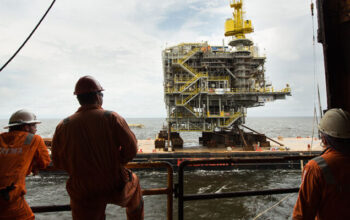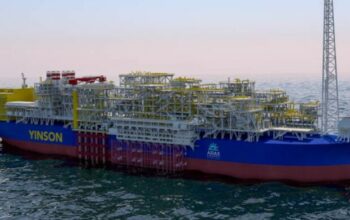Africa’s liquids supply is expected to add up to 8% of the global volumes throughout 2023, with African output measuring seven million barrels per day (MMbbls/d), the African Energy Chamber states in its latest report on the African energy landscape, ‘The State of African Energy Q1, 2023 Outlook.’
Both offshore and onshore projects will contribute to supply, with the continent’s top five liquids producers accounting for 80% of Africa’s overall output, producing approximately 5.76 MMbbls/d.
Nigeria: 1.3 MMbbls/d
Boasting 37 billion barrels of proven crude oil reserves, Nigeria’s output is predicted to hit 1.3 MMbbls/d in 2023. Despite production declines in recent years due to COVID-19 impacts as well as oil theft and vandalism, efforts by the Government to enhance output by tackling crime as well as the protection of infrastructure are beginning to bear fruit.
Additionally, recent developments including the launch of a Mini Bid Round in 2022 by the National Upstream Petroleum Regulatory Commission; the adoption of the Petroleum Industry Act in 2021 – introducing attractive fiscal terms and incentives for E&P players -; and the planned development of some seven offshore blocks covering approximately 6,600 square km are projected to help increase and stabilize production in the country.
Libya: 1.2 MMbbls/d
While Libyan liquids output was heavily impacted by the COVID-19 pandemic and political instability, the country is seeing a rapid recovery with production reaching a high of 1.2 MMbbls/d in 2022.
Throughout 2023, output is expected to remain stable as Libya accelerated exploration under efforts to maximize the exploitation and monetization of its 48 billion barrels of crude reserves to drive gross domestic product growth and global energy security.
Angola: 1.13 MMbbl/s
The start-up of new projects in the Kaombo North, Eastern & Western hubs on Block 15/06 and the Pazflor development as well as the Greater Plutonio Phase 2, CLOV Phase 2 and Dalia Phase 3 developments have led to significant increases in output in Angola.
Reversing declining production trends, Angolan output increased from 1.13 MMbbls/d in 2021 to 1.15 MMbbls/d in 2022. Field developments, new exploration campaigns and redirected investment are expected to see production remain steady, with output measuring 1.15 MMbbls/d throughout 2023.
Algeria: 1.06 MMbbls/d
With production expected to remain stable throughout 2023, measuring 1.06 MMbbls/d, Algeria ranks amongst Africa’s top liquids producers in 2023.
Since 2020, the country has gradually increased its output, with production rising from 930,000 barrel per day (bpd) to 940,000 bpd in 2021 and then 1.07 MMbbls/d in 2022. Following announced production cuts by the Organization of Petroleum Exporting Countries in 2022, Algerian output fell to 1.06 MMbbls/d. Algeria’s proven crude oil reserves amount to 12.2 billion barrels.
Egypt: 460,000 bpd
Mainly driven by activities across onshore basins and by joint ventures between the Egyptian General Petroleum Corporation – the national oil company – and global majors and independents, Egypt’s production in 2023 is expected to remain stable at 460,000 bpd. This follows two years of production stability in 2021 and 2022.
![]()




